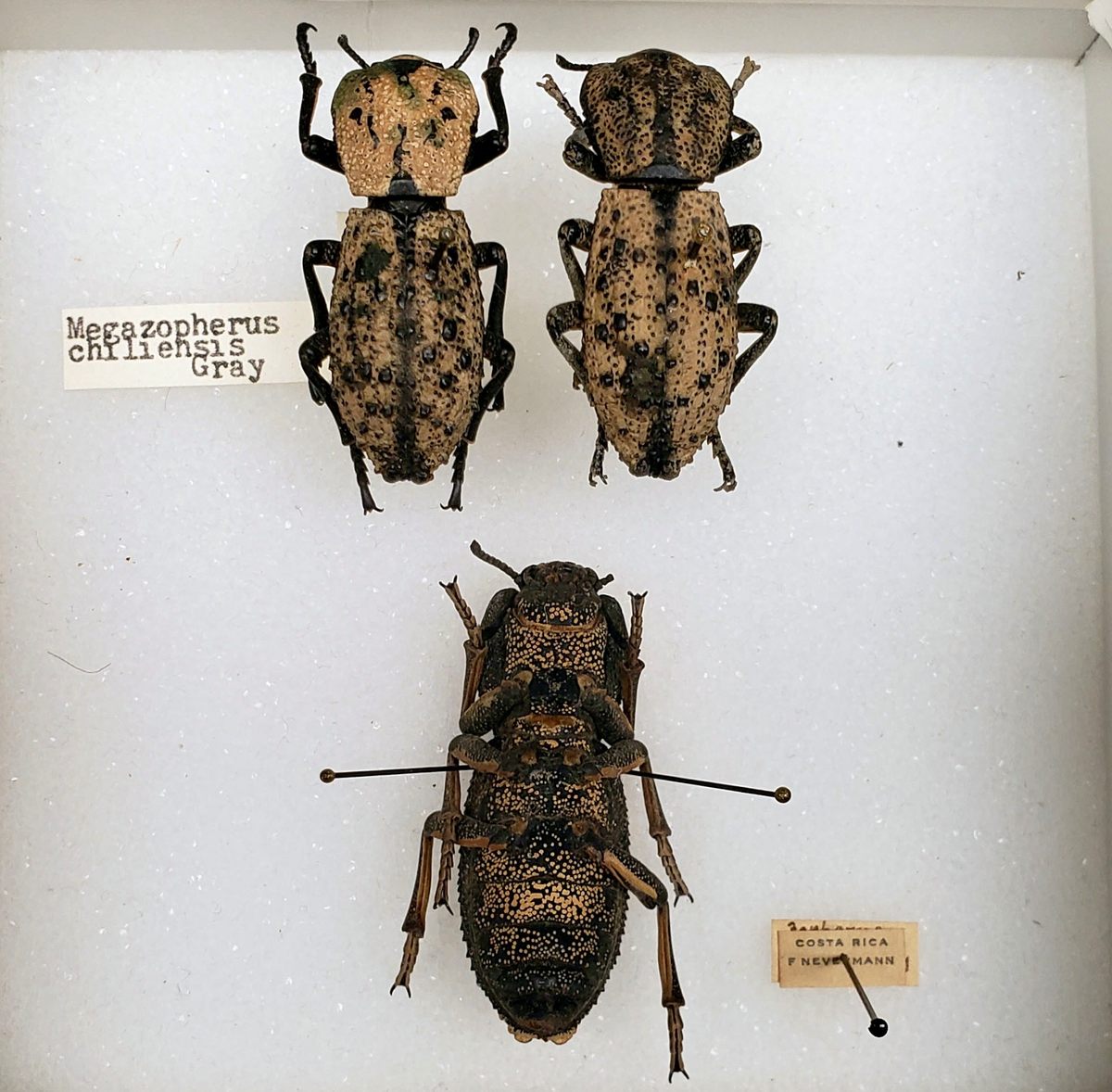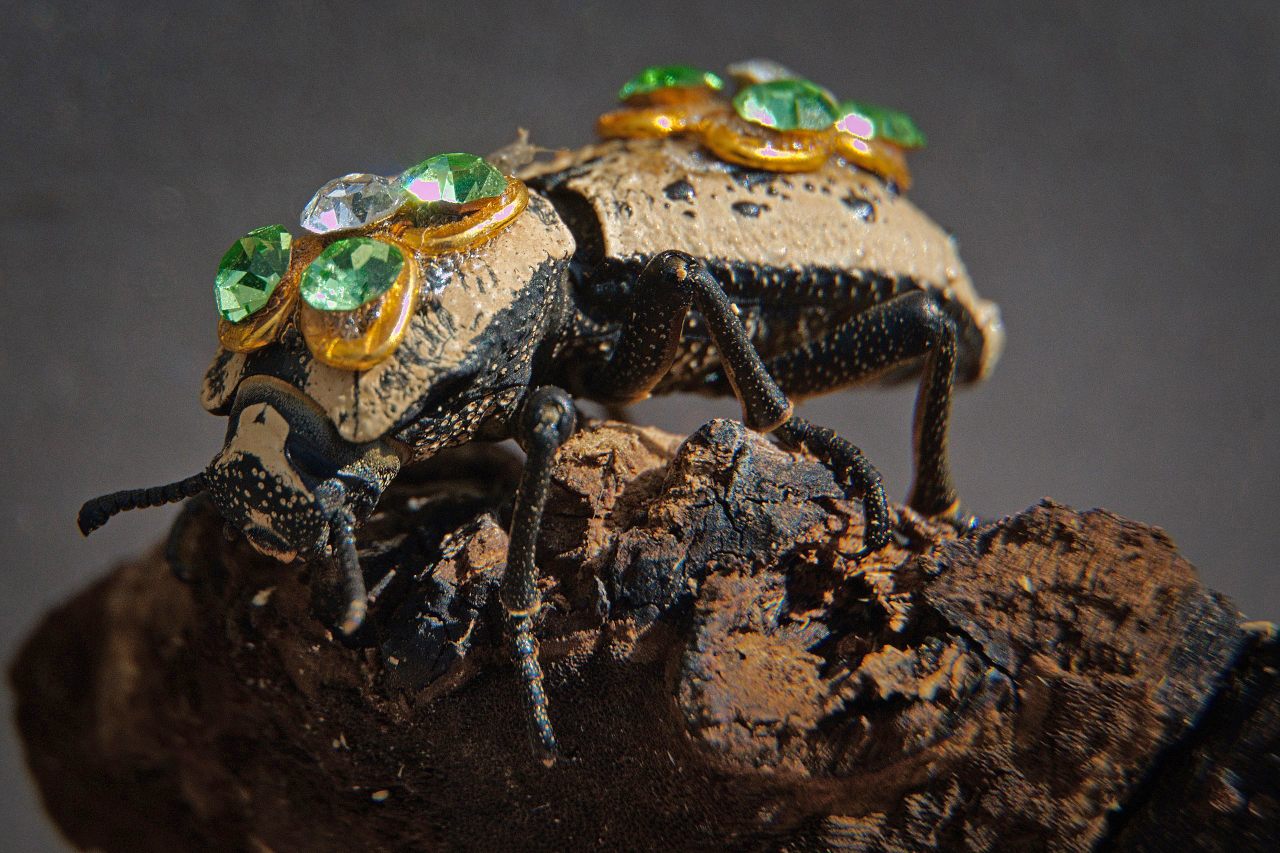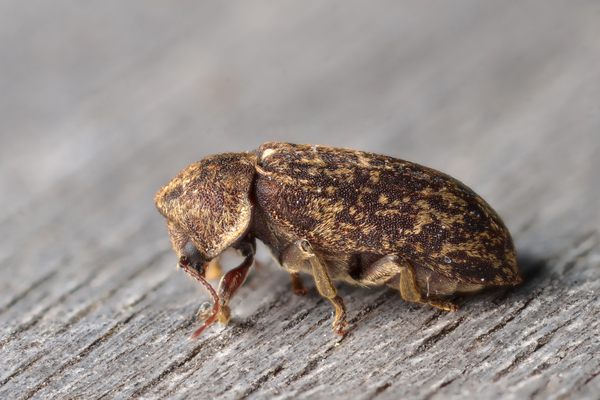The Living, Breathing Brooches of the Yucatán
The live, jewel-encrusted beetles called maquechs are tied to an ancient legend, but some worry for their future.
In the vast insect collection of the Smithsonian National Museum of Natural History in Washington, D.C., one small box of beetles stands out from countless others. Currently it sits on the desk of Floyd Shockley, the museum’s entomology collections manager. He’s spent his spare summer hours in 2023 meticulously working on the contents of this box—re-placing rhinestones and replica rubies. The box contains 28 maquech beetles: bedazzled bugs once meant to be worn as living jewelry.
“I can’t say for sure, but I’d wager this is one of the best and most well-rounded collections in terms of different decorative styles of maquechs,” he says.
Maquech, or makech, beetles are objects of legend, and also tourist trinkets and sources of concern for both border control and conservationists. Sold alive, bound by a short chain and a safety pin, these glamorous bugs are designed to shine while scuttling slowly about on a blouse. They are still hawked to tourists today in Yucatán, Mexico—where the trend originated—but aren’t legally allowed back over the U.S. border without a permit. Several confiscated creatures—no longer scuttling by that point—have made their way to Shockley’s desk, where he is dutifully repairing their degraded glue, both for appearance and to educate the public about them.

Each beetle is adorned in fake diamonds, ruby, emeralds, pearls, or velvety fabric. “I’m not a jewel expert,” says Shockley, “but it certainly appears to me like the vast majority of these are replica jewels, they aren’t actual precious gems. Most of them tend to try to look like rubies or emeralds, a few diamonds and pearls. Most of it looks to be costume.”
The beetles that are used to make maquechs are pretty flashy on their own. The thumb-sized, hardy species of wood-burrowing, neotropical beetle, Zopherus chilensis, has a back of muted gold. They are found from Mexico to northern Venezuela, but the trend of adorning and donning the shy insects as fashionable pets is unique to the Yucatán, allegedly dating back to Maya times.

The legend states that a Maya princess’s forbidden lover was sentenced to death. In response, a shaman turned the man into a beetle so his love could wear him over her royal heart. While the story helps add romance to the whole wearing-a-bug-on-your-chest thing, some scholars are skeptical of the timeline. Shockley can’t date the practice back that far. “There’s really no sort of evidence from Maya writings themselves describing that particular myth,” he says. “The Maya were very literate people, they had writing and science. It seems like something that particular would have been written down if it really did date back to that time. I think it probably is a much, much younger practice, probably only going back a couple hundred years.”
Regardless, it’s still a cultural staple in some parts of Mexico, though some hope that will change. “All Mexicans know of the maquech and its legend,” says artist Daniela Villegas, who is from Mexico City and now lives in Los Angeles, where she is known for crafting jewelry inspired by nature, including insects (though she doesn’t use any live ones). She recalls having her own maquech as a child, a souvenir from a trip to Mérida, capital of Yucatán. She remembers her pink-studded beetle fondly, but she now looks back with remorse. “When I was a kid I was like, ‘This is cool,’” says Villegas. “Now I’m a more conscious person, I know it’s super-uncool. It’s not nice at all.” She calls the beetles “pet slaves,” taken from their homes to, eventually, starve for fashion or tradition. “Just because it was a tradition for so many years, that doesn’t mean it’s a good tradition,” she adds.

Shockley also wonders about the ethics of these eternally chained pets. Though the tough beetles can go months or even years without eating, it still feels off, he says. “The fact that you’re pinning a live animal to yourself seems a little questionable. I use a leash to walk my dog, but the dog gets to take the leash off when you get back to the house,” he says. “The beetle has the chain glued to it. For me, that is a little bit of a moral dilemma.”
Four specimens in particular stand out from the sparkling crowd: each coated completely in velvety fabric and free of chains. “It’s truly unique, but I can’t imagine the beetle particularly cared for it,” he chuckles. “I can’t imagine it was a very comfortable situation.”

Insect comfort isn’t the only concern. These beetles reproduce slowly, and biologists in Mexico worry that tourist demand could be seriously impacting the local population, according to the Yucatán Times.
While Shockley refers to the beetles as “little tanks,” he knows the population as a whole isn’t indestructible. He’s not looking to grow the museum’s collection, but wants to put the ones they have to good use. “They are part of our collection now. So we’re going to preserve them essentially forever,” he says. “But it’s also part of our mandate to help encourage education of the general public. So these guys serve a very important role.”





































Follow us on Twitter to get the latest on the world's hidden wonders.
Like us on Facebook to get the latest on the world's hidden wonders.
Follow us on Twitter Like us on Facebook